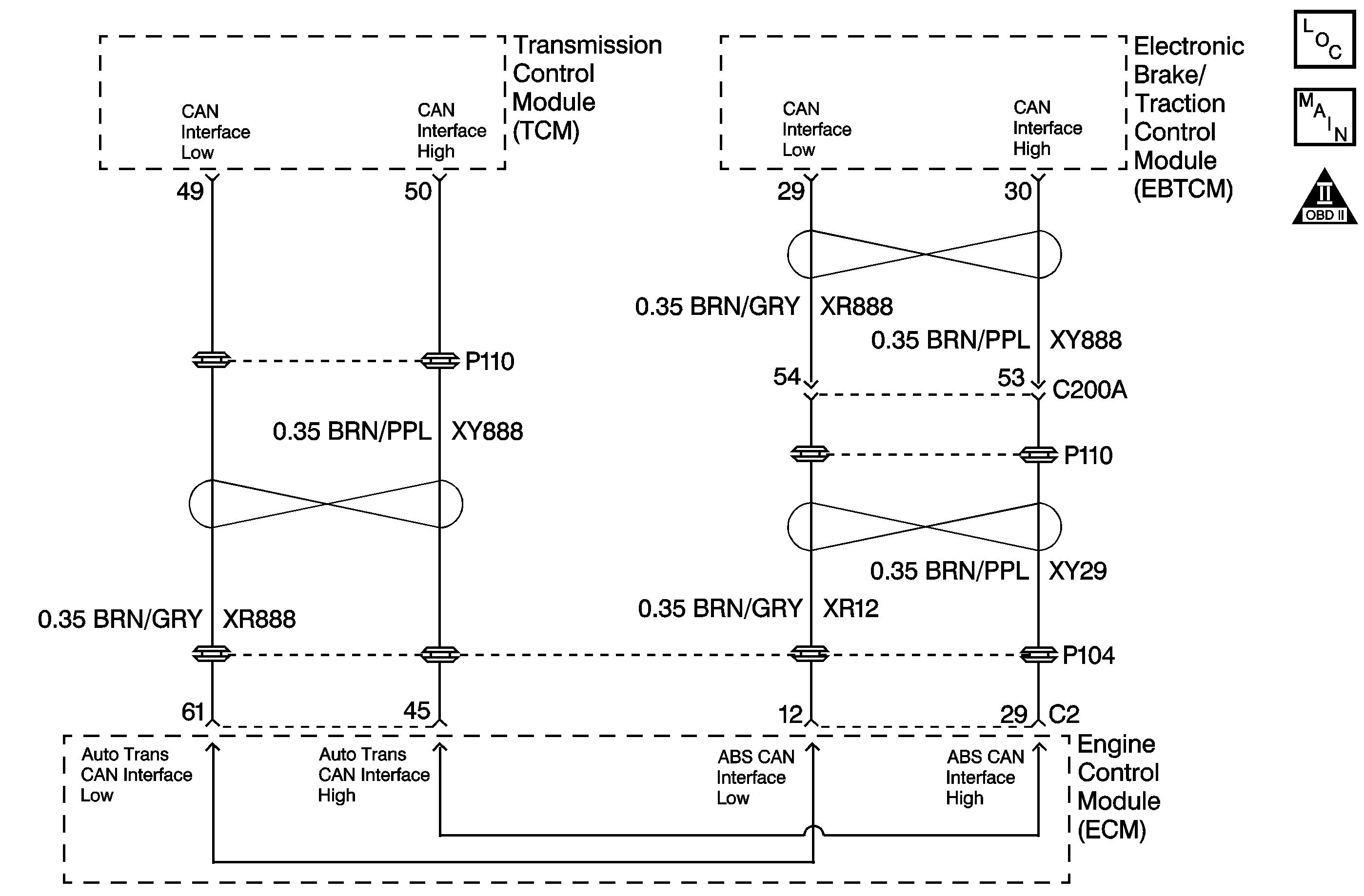
Circuit Description
During shift events, the transmission control module (TCM) sends requests to the engine control module (ECM) to reduce the engine torque in order to improve shift feel. The ECM reduces engine torque by retarding the spark timing in response to the TCM request.
The TCM request is sent to the ECM through a communication network called the controller area network (CAN). Two circuits are used to communicate CAN data between the ECM and TCM. A fault in the CAN will not cause DTC P1740 to set by itself. If a CAN fault occurs, other DTCs will set before DTC P1740.
When the ECM detects that the request for torque reduction has failed, the ECM sends a message to the TCM. When the TCM receives a torque reduction failure message from the ECM, then DTC P1740 will set. DTC P1740 is a type C DTC.
Condition for Running the DTC
The ignition is ON.
Condition for Setting the DTC
The request for engine torque reduction has failed.
Action Taken When the DTC Sets
| • | The TCM flashes the sport mode lamp. |
| • | The TCM memory stores DTC P1740 at the time of the first failure. |
| • | The ECM records the operating conditions when the Conditions for Setting the DTC are met. The ECM records this information as Failure Records. |
| • | The TCM commands maximum line pressure. |
| • | The TCM freezes shift adapts from being updated. |
| • | The TCM inhibits torque control. |
Conditions for Clearing the STL/DTC
| • | A scan tool can clear the DTC. |
| • | The TCM clears the DTC from TCM history if the vehicle completes 40 warm-up cycles without a non-emission-related diagnostic fault occurring. |
| • | The TCM cancels the DTC default actions when the ignition switch is OFF long enough in order to power down the TCM. |
Diagnostic Aids
Drive the vehicle and watch the request for torque reduction to be present when shift events occur.
Test Description
The numbers below refer to the step numbers on the diagnostic table.
Step | Action | Value(s) | Yes | No | ||||||||
|---|---|---|---|---|---|---|---|---|---|---|---|---|
1 | Did you perform Powertrain On Board Diagnostic (OBD) System Check - Automatic Transmission ? | -- | Go to Powertrain On Board Diagnostic (OBD) System Check - Automatic Transmission | |||||||||
2 |
Important: Record all Failure Records before clearing the DTC. Using Clear Info erases the Failure Records from the ECM and TCM. Did you record any ECM Failure Records? | -- | Go to the applicable ECM DTC | |||||||||
3 | Did you record Failure Records for any of the following DTCs?
| -- | Go to the applicable CAN Bus DTC | |||||||||
Did DTC P1740 reset? | -- | Go to Intermittent Conditions in Engine Controls | ||||||||||
5 | Did any other DTCs set? | -- | Go to the applicable DTC | |||||||||
6 | Replace the ECM. Refer to Engine Control Module Replacement . Is the action complete? | -- | -- | |||||||||
7 | Perform the following operation to verify the repair:
Did DTC P1740 reset? | -- | System OK |
